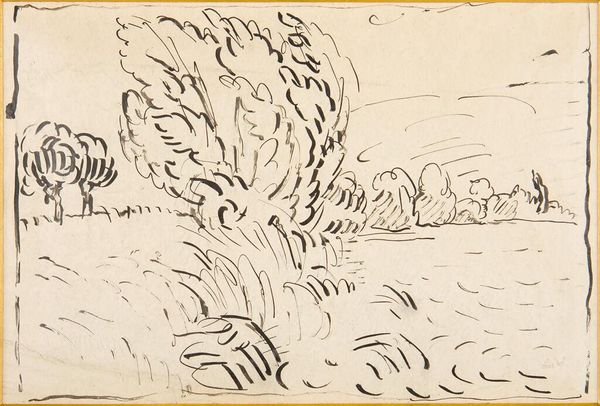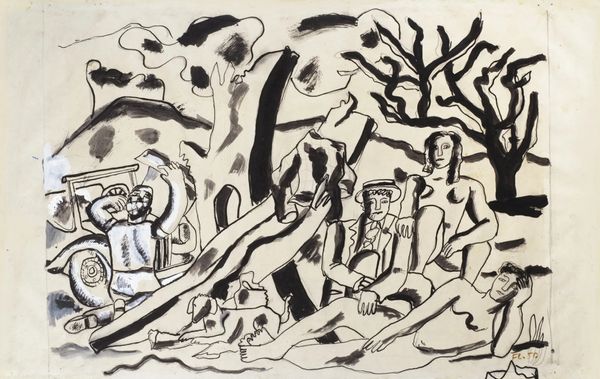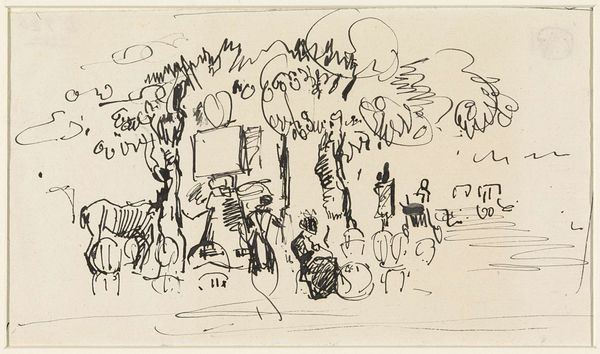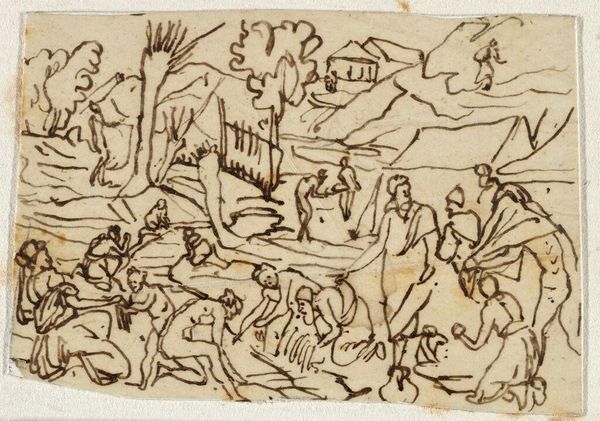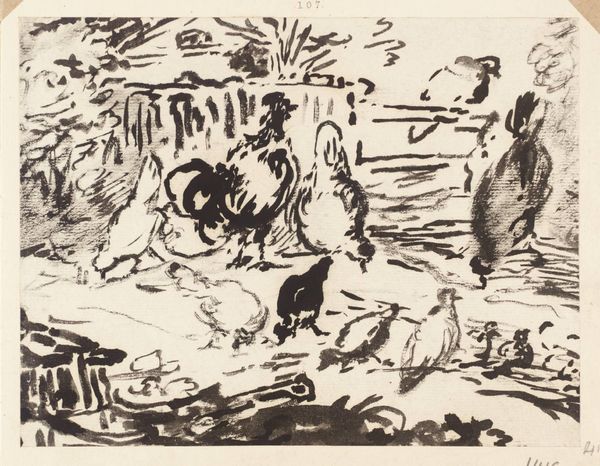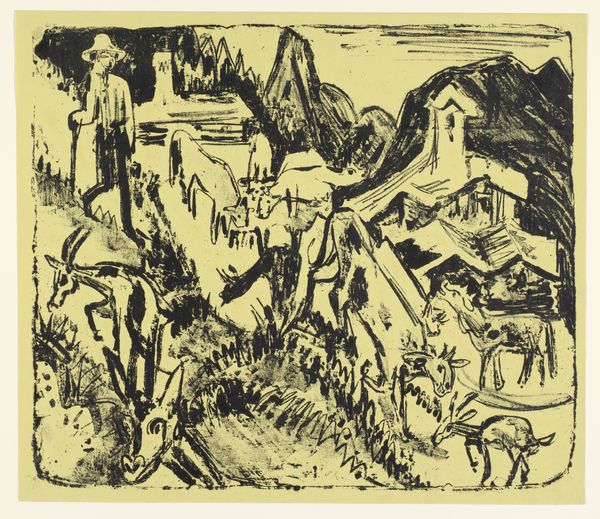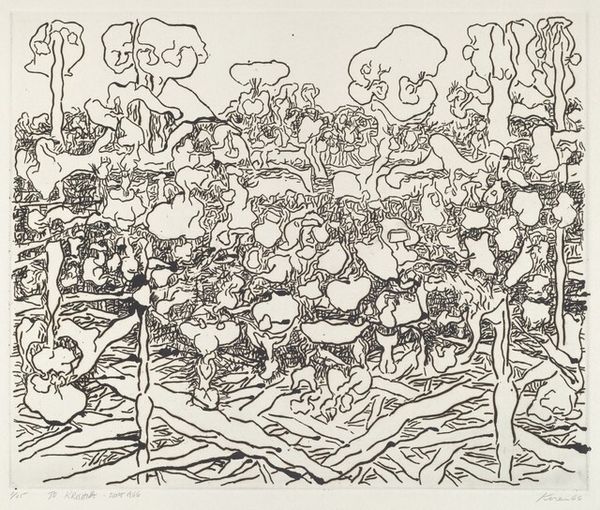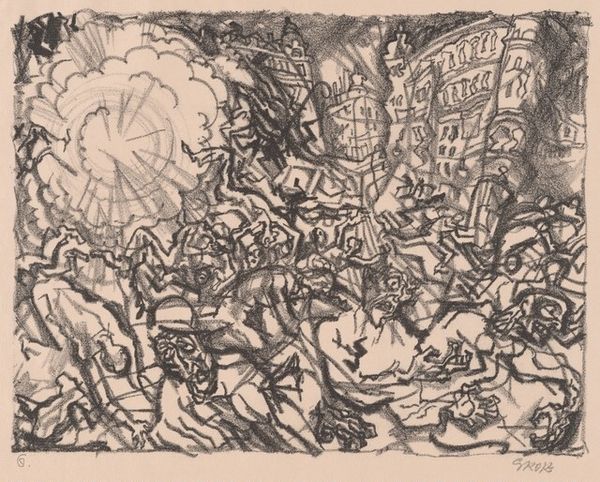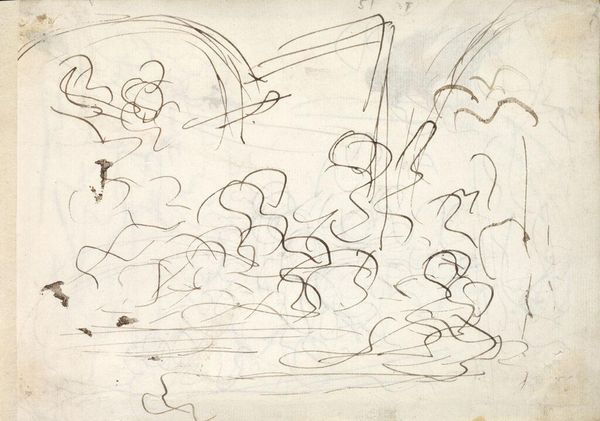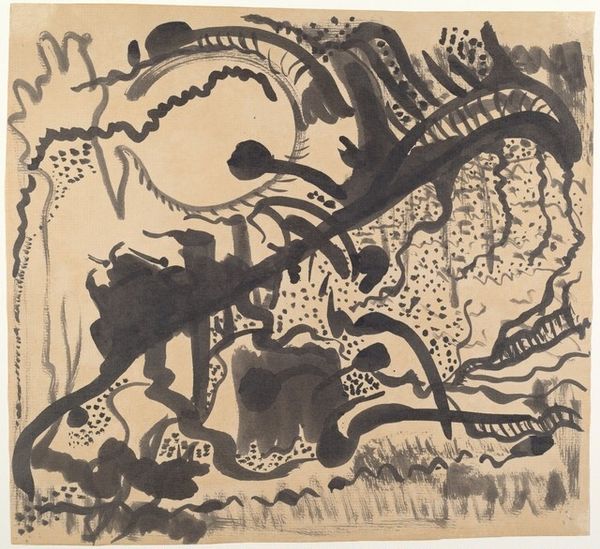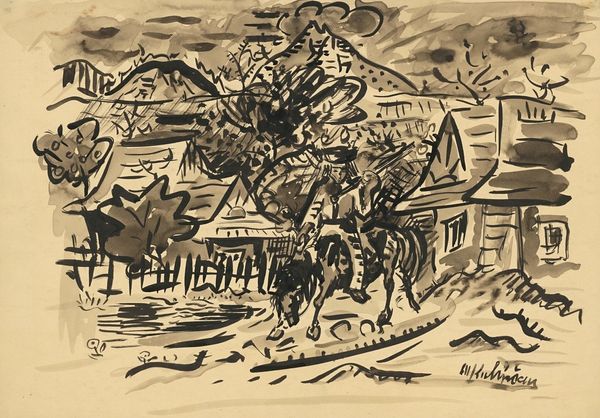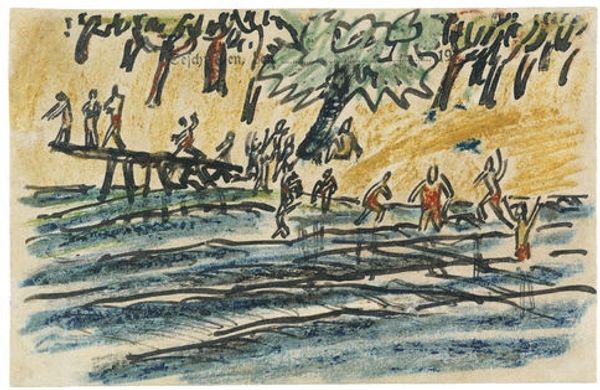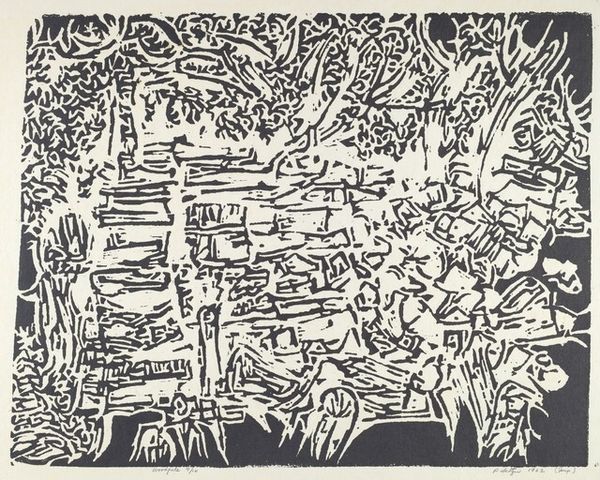
drawing, impasto, ink, pencil
#
drawing
#
landscape
#
impasto
#
ink
#
pencil
#
genre-painting
#
post-impressionism
Copyright: Public domain
Curator: Oh, there’s a flurry of ink on the page—a tangled embrace of strokes depicting a scene that appears to buzz with frenetic energy! Editor: Indeed. This is "Old Vineyard with Peasant Woman," a work produced by Vincent van Gogh in 1890. You can find this piece at the Van Gogh Museum in Amsterdam. Van Gogh crafted it using ink, pencil, and with the expressive application of impasto, reflecting his distinctive Post-Impressionist style. But let's get into this buzzing feeling; tell me more about that. Curator: Well, look at the linework—it practically vibrates. The rapid strokes conjure an almost claustrophobic vision, despite depicting an outdoor scene, creating a world of restless anxiety. The vineyard seems trapped. And consider the single female figure—diminutive, nearly consumed by the surrounding, overgrown landscape. Is this perhaps a commentary on the subjugation of women to an endless cycle of agricultural labor and societal expectations? Editor: That's a potent interpretation, viewing the composition as a symbol of constrained womanhood. I am instead struck by how he transforms ordinary objects, giving everything the same vibrating textural intensity. The roofs of the buildings become visually as dynamic and essential as the figure of the woman or the vine itself. Semiotically speaking, everything takes on a renewed level of visual energy. Curator: Yes, and if you read into his life, there is that potential narrative about mental health in agrarian contexts during the late 19th century—his voluntary confinement would make one see this image as less about celebrating nature and more as the oppressive grip of rural existence, further isolating vulnerable individuals. It certainly seems his experiences in such asylums shaped a bleak reading. Editor: I would argue it is more an attempt at translating what he was actually seeing into tangible form, an example of a type of subjective visual realism that gets expressed as abstraction of what others were literally viewing with the eye, but without as much passion. He's certainly forcing a novel reading that continues to challenge how we think about perception. Curator: I still see it through the lens of societal narratives—the peasant woman as a stand-in for a forgotten class. Editor: Either way, the interplay of visual forms creates an intriguing, albeit agitated composition. Curator: It urges us to look at art and life from a different perspective.
Comments
No comments
Be the first to comment and join the conversation on the ultimate creative platform.
